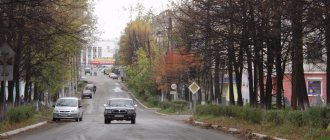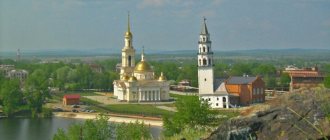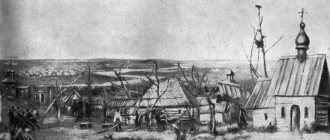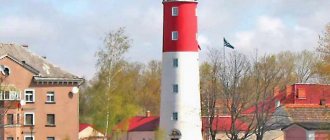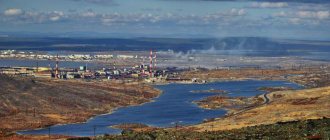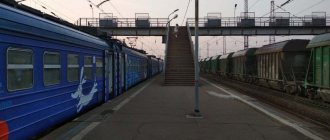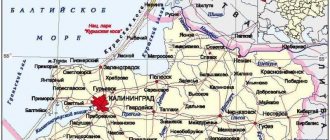Nevyansk is a city with a rich and interesting history. In the past, this is where the mining empire of the Demidovs began (essentially a state within a state).
The plant on the Neiva River (at that time it was called Nevya, hence the name of the city) was founded at the beginning of the 18th century by decree of Peter I. The date of birth of Nevyansk is considered to be December 15, 1701, when the first cast iron was smelted here. But already in March 1702, the Nevyansk plant was transferred from the treasury to the possession of the blacksmith Nikita Antufiev, the founder of the Demidov dynasty.
In the past, Nevyansk was often called the “Old Plant”, and the poet V.A. Zhukovsky called him “the grandfather of the Ural factories.” Indeed, among the cities of the Sverdlovsk region, Nevyansk is second only to Verkhoturye and Turinsk in age, and Kamensk-Uralsky is its same age.
In those days, the best iron in the world was produced in Nevyansk, the largest tsar blast furnace in the world at that time (!) worked here, a lightning rod was used for the first time, long before its official opening, reinforced concrete technology was used, and, it is believed, the first Siberian silver was secretly smelted ...
In the early 1720s, the Nevyansk plant alone produced two, and in other years, 3 times more metal than all three state-owned Ural plants (Kamensky, Alapaevsky, Uktussky). It was Nevyansk iron, as the best in the country, that for the first time in the history of Russia began to be exported to foreign countries. Until this moment, on the contrary, metal was brought to our country from abroad. For a long time, Nevyansk was the largest factory village in the Urals.
After the death of Akinfiy Nikitich Demidov in 1745, the Nevyansk plant went to his son Procopius. In 1769, the Nevyansk plant was bought from the Demidovs by Savva Yakovlev (Sobakin).
However, gradually all the forests, so necessary at that time for the operation of the plant, were cut down throughout the entire area. Because of this, the existence of the Nevyansk plant was in question. D.N. Mamin-Sibiryak wrote in the 1880s:
“Currently, the Nevyansky plant enjoys a very bad reputation in the Urals and is better known for the fact that its very existence hangs by a thread... If Akinfiy Demidov himself, the main tycoon and founder of the Ural factories, rose from the ground, and looked from the tower at the works of his hands, His iron heart would probably have shrunk with grief. The ancient factory nest is barely breathing, and the ancient iron, which made the glory of the Urals and bore its trademark “Old Sable,” seems to have been preserved only on the roofs of the ancient factory buildings...”
Even now there are vast treeless spaces at the approaches to Nevyansk.
One of the worst tragedies in the history of Nevyansk was the fire of 1890. On that ill-fated day, two thirds of the huge factory village at that time were destroyed by fire. Dozens of people died and thousands were left homeless. It was because of the fires that happened here that the documentation related to the Nevyansk Tower was not preserved, which is why many of its secrets will probably never be revealed.
There have been repeated strikes by workers at the Nevyansk plant. One of them is reminiscent of an exhibit in the park on Revolution Square - the so-called “goat”. This is metal frozen in an extinguished blast furnace.
Nevyansk is also famous for its gold. In the 19th century, Nevyansk was rightly called a “gold mine”. The yellow metal is still mined in the vicinity of Nevyansk. Gold panning machines are clearly visible near the highway.
Nevyansk Leaning Tower
The main attraction of the city is the Nevyansk Leaning Tower. Every year more than 100 thousand people from all over the Urals, from Russia and abroad come to see this architectural structure, shrouded in secrets and legends. Thanks to the tower, Nevyansk has become one of the largest tourist centers in the Sverdlovsk region.
There are many mysteries at the tower. Starting from the fact that it is not even known who built it and when (it is only generally accepted that it was most likely in 1725), ending with the auditory room and legends about the dungeons in which silver and gold were allegedly secretly smelted.
The tower is inclined (but not falling). According to legend, she looked askance because of Demidov’s sins. However, everything is much more prosaic. The slope appeared during the first stage of construction due to ground movement. This follows from the fact that the lower part is inclined more, and the higher it is, the smaller the angle of inclination, since they tried to level it.
For the first time in the world, a lightning rod was used on the tower spire, several years before its official opening.
English-made chimes work regularly on the Nevyansk Tower. The inscription on the chime bells remains: Richard Phelpsi Loncini Fecit 1730,” which translated from Latin means: “Richard Phelpsi, made in London, 1730.” Richard Phelps was a foundry master in London, and the bells of his work are installed on the chimes of St. Paul's Cathedral. The circumstances surrounding the acquisition of chimes by the Demidovs are unknown.
During Soviet times, the chimes did not work until they were restored in the 1970s by local craftsman Alexander Sakantsev.
During a tour of the tower, tourists see a theatrical performance. Akinfiy Demidov invites guests to make a commemorative coin themselves.
In addition, in one of the rooms of the tower, a scene of Demidov checking workers working in the basement was reproduced.
Tourists are also shown a secret staircase inside the walls that leads to the assay room - the “laboratory”.
The so-called auditory room is of greatest interest among tourists. In appearance, this is an ordinary room, but if two people stand in opposite corners of the room facing the wall and one of them pronounces words in a barely audible whisper, the other will not only hear them, but will feel that the sound is literally falling on him. This effect is explained by the vaulted ceiling. The sound seems to spread, glides along the arch in a narrow strip, practically without being reflected or absorbed along the way.
You can only get into the tower with a guided tour or a group. It's worth making an appointment in advance, especially if you're traveling on weekends.
The Nevyansk Tower is the most famous architectural landmark of the Sverdlovsk region. It is a historical and cultural monument of federal significance.
Next to the tower, in a red-brick restored power plant building from the 19th century, the Nevyansk Historical and Architectural Museum is located. The modernly designed museum presents exhibits from the history of the Nevyansk plant.
Coordinates of the Nevyansk Historical and Architectural Museum:
Nevyansk, Revolution Square, 2. Telephone: (34356) 2-25-01, 2-27-13, 2-20-56. Website: museum-nev.ru.
A single architectural ensemble with a tower and a power plant museum is formed by the Transfiguration Cathedral located here.
The temple was founded in 1824 and consecrated in 1830. Built at the expense of the Yakovlev breeders. In Soviet times, it shared the fate of most churches and was closed, going to the Nevyansk Mechanical Plant. After the Soviet pogrom it was restored in 2003.
The Transfiguration Cathedral is rightfully considered one of the most beautiful and majestic churches in the Urals. The bell tower of the temple reaches a height of 64 meters and is one of the highest in the Middle Urals.
A hundred meters from this architectural ensemble is Nevyansky Pond. This is the first factory pond in the Middle Urals. In the past, the gold-bearing bottom of the pond was shoveled by a dredge. Now the pond has the status of a hydrological natural monument.
Many ancient merchant houses have been preserved in Nevyansk. There are about 60 historical and architectural monuments here, although the condition of most of them is not good.
Holy Trinity (Royal) Church
The four-pillar, five-domed temple was built according to the design of the architect K.A. Ton. The brick church in the Russian-Byzantine style received parishioners in 1853.
In 1937, the temple was closed; three years later, by order of the ideologists of Bolshevism, all the domes were destroyed. Only in 1995 the community was able to return the temple.
Funds for restoration have not yet been found. Now the architectural monument has the status of a bishop's courtyard.
Address: st. Krylova, 20.
From the old one
“In the distance is a patch of lake and the tops of the towers. Lots of houses on the sides. The lake is moving apart, the towers are growing and growing. One turned out to be a cathedral bell tower, and the other was built in 1725, in the image of the Moscow Kremlin ones, only much higher than them. She glanced sideways, like the famous campanellas of Pisa and Bologna...
It was already dark when we drove through the wide streets of this plant, which is larger in size than any other city. There a bright flame flashed towards us. It turned out that the blast furnace was throwing it out, throwing it up, throwing it out of the round windows, throwing it up, throwing it out of the round windows, throwing it out into the open mouth of the stove, from where the ripened cast-iron milk was pouring out at that time...
There are many legends associated with the Nevyansk leaning tower. In its dungeons people were drowned, in its nooks and crannies people were buried, in its black dungeons and dungeons they kept harmful and dangerous opponents. Whether this is true or not, the walls will not tell anyone; The blood that was once shed does not show on the stone floors. The realm of ghosts has become the stuff of fairy tales; visions no longer appear to the curious tourist with tales of secrets and horrors that were once committed under these dark, heavy vaults. Legends remain in people's memory, and people stubbornly associate them with this old tower; the people say about it what people from the other world will not say, to the people every stain on these numb walls seems to be traces of murder, every mysterious noise in the wall - the groans of victims once tortured in stone bags; howling in the upper galleries - their cries: “You’d better not go into the basements!” There are fears there." Ask about what fears - it turns out that white flashes in the air, you can imagine skeletons clinging to the walls, as they clung to when the water flooded these dungeons; you can hear the clatter of bones in the corners and the traditional rattle of chains..."
IN AND. Nemirovich-Danchenko, fragment from the book “Kama and the Urals” (1890)
Museum "House of Nevyansk Icon"
In the 18th-19th centuries, the Nevyansk plant was a stronghold of the Old Believers. The Old Believers, persecuted by the authorities and the church, were willingly accepted in Nevyansk. Nevyansk owes a lot to them. In the same centuries, Nevyansk became famous for its magnificent Nevyansk Old Believer icon. It differs from the traditional icon in its brightness, grace and beauty. Nevyansk icon painting is a unique phenomenon of Russian artistic culture, which has become widespread outside the Urals. The Nevyansk icons were owned by the breeders Demidovs, Yakovlevs, the merchant Kharitonov and others.
Currently, a secular icon-painting workshop has been created in the city, with a private museum “House of the Nevyansk Icon” operating under it.
Icons from the workshop can be seen in the Church on the Blood in Yekaterinburg and in other cities of Russia. There are icons from the Nevyansk workshop outside our country. For example, Queen Catherine II of Great Britain in Buckingham Palace.
A collection of more than 300 examples of Nevyansk icon painting is presented here. In the museum you can see both exhibits that are several centuries old and colorful modern icons. The museum is located just a few minutes walk from the Nevyansk Tower.
Museum address: Nevyansk, st. Krasnoarmeyskaya, 2. Tel.: +7 (34356) 2-40-05. Website: www.new-ikona.ru.
Cultural life
- Nevyansk is the Russian center of mining and Old Believer icon painting.
- The main attraction of the city is the Nevyansk Leaning Tower.
- In 2001, the city of Nevyansk celebrated the 300th anniversary of its foundation.
- The city has a Palace of Culture for Mechanical Engineers
- Nevyansk is mentioned in Vladislav Krapivin’s book “Three from Carronade Square” as the place of residence of the main character of the book, Slavka.
Byngi village
The Old Believer village of Byngi is located 7 kilometers from Nevyansk. In 1718, an ironworks was founded here - a satellite of Nevyansk. Now there is no trace of him left. In 1873, the plant was stopped, the pond was drained, and in its bed they began to wash gold, of which a lot was discovered here. By the way, an interesting fact is connected with the pond. In the early 1870s, “two bones, a tusk and a mammoth tooth and 10 bones” were discovered at its bottom, which were transferred to the museum of the Ural Society of Natural History Amateurs (UOLE), which was being created at that time in Yekaterinburg.
The name of the village comes from the Bynga river, the name of which comes from the Mansi Elbyng-ya - “Holy River”. This means that these places were revered among the Voguls. By the way, not far from here the oldest wooden sculpture on our planet was found - the Shigir idol.
The main attraction of the village that attracts tourists is the temple in the name of St. Nicholas the Wonderworker. The temple is one of the oldest in the Middle Urals. It was founded in 1789 and consecrated on September 30, 1796.
According to legend, after the death of the factory owner Savva Yakovlev, disputes began among his sons over the inheritance. One of the sons, Pyotr Savvich, swore that if the Nevyansk factories were transferred to him, he would build an unprecedented temple. When Peter Yakovlev’s wish came true, he kept his oath and gave the order to his manager: “If possible, cast a cast-iron church in Byngi in the name of St. Nicholas of Christ: if this cannot be done, then build a glorious temple there, do not spare anything, which will be marveled at.” and which would never exist..."
The temple is unusual due to the abundance of cast iron. The entire floor and steps are covered with patterned cast iron slabs, and the walls are reinforced with metal ties. The temple is also unusual due to the presence of ancient chimes on the bell tower. By the way, these are local chimes made in Nevyansk. Alas, the chimes are not working now.
In the temple itself there are ancient icons of the 18th-19th centuries, belonging to the famous Nevyansk school of icon painting. The frescoes painted on the walls are also very interesting.
The temple is quite well preserved, since it was not destroyed during Soviet times. It is currently being restored by the Drug Free City Foundation. St. Nicholas Church Byneg is a historical and cultural monument of federal significance.
Next stands another religious building in Byneg - the Edinoverie Church of the Kazan Mother of God.
Byngi is also interesting for its ancient houses with carvings - excellent examples of wooden architecture of the second half of the 19th - early 20th centuries. One of the most striking examples is located near St. Nicholas Church.
It, as well as the temple and other views of Byneg, can be seen in the first Soviet serial film “Gloomy River” (1968). By the way, for the filming of this film, they even dug up electric poles on the street and near the church so that they would not get into the frame.
Upper and Lower Tavolgi
Further along the route, tourists will meet Upper and Lower Tavolgi. Meadowsweet is a medicinal herb (also known as meadowsweet). It grows in abundance along the Tavolga River flowing here.
Both villages are famous for their pottery crafts. This fishery was developed thanks to local high-quality red clay. Before the revolution, dozens of workshops operated in these villages.
The Tavolzhskaya Ceramics enterprise (formerly the Nevyansk Art Ceramics Factory) operates in Nizhny Tavolgi. In 2013, a couple of guest houses were built on its territory where you can stay. There are plans to build an entire village street with access to nature for tourists.
At the Tavolzhskaya Ceramics enterprise
Director of the enterprise A.G. Nazarov
Here, in Nizhniye Tavolgi (at the entrance to the village on the left), stands the house of the hereditary potter Sergei Maslikov. The Maslikov family welcomes tourists on excursions and master classes.
Sergei talks captivatingly about his craft, interspersing it with funny jokes. Pottery making is not as simple as it might seem from the outside. In order to fashion a product, you need to do a lot of things. Sergey interestingly tells how clay was “cultivated” and pottery was made in the past and how it happens now. By the way, the Maslikov family alone uses 10-12 tons of clay per year for pottery.
Those who wish can practice making pots on a potter's wheel and making toys here. After this, the owner of the workshop will give you healing meadowsweet tea with pancakes.
Phone numbers of the Maslikov pottery workshop in Nizhny Tavolgi: 8-952-14-34-449, 8-912-61-48-837. Website: gonchar-iz-tavolog.ru
There is a similar workshop in Verkhniye Tavolgi. It belongs to the already mentioned above enterprise “Tavolzhskaya Ceramics”. After visiting the museum located here, you can try your hand at sculpting and painting clay products, and take the resulting masterpiece as a souvenir. You can also order lunch. An Old Believer chapel was built on the territory of Tavolzhskaya Ceramics.
Telephone numbers of Tavolzhskaya Ceramics: 8-982-658-17-30, 8-953-003-80-17. Website: tavolgatur.ru
You should sign up for excursions to pottery workshops in advance.
How to get to Nevyansk?
The city of Nevyansk is located in the Sverdlovsk region, 92 kilometers north of Yekaterinburg. You can get here along the Yekaterinburg - Nizhny Tagil highway, as well as by buses, trains or electric trains (Ekaterinburg - Nizhny Tagil). There are buses from the center of Nevyansk to Byneg, Verkhniye and Nizhnye Tavolog.
Pavel Raspopov
UraloVed.ru
PS “Uraloved” thanks the Tourism Development Center of the Sverdlovsk Region and “TurExpoService” for the information and advertising tour to Nevyansk and Tavolgi.
See also:
The terrible fire of 1890 at the Nevyansk plant
Trip to Nevyansk and Byngi (08.11.2014)
House of the blacksmith Kirillov in Kunar
Story
Nevyansk was founded by decree of Peter I in 1701 in connection with the construction of iron and iron smelting plants.
The first smelting was carried out on December 15, 1701, and this date is considered to be the birthday of Nevyansk - the world's first city-factory K: Wikipedia: Articles without sources (type: not specified)[ source not specified 2566 days
]. On March 4, 1702, by decree of Emperor Peter I, the State Plant was transferred into the ownership of the factory owner Nikita Demidovich Antufiev (Demidov), the founder of the Demidov dynasty. In 1745, Akinfiy Nikitich's property was divided into three parts between his sons Procopius, Grigory and Nikita. The Nevyansk part went to Prokopiy Akinfievich Demidov.
In 1768, the Nevyansk plant was bought by Savva Yakovlev (Sobakin)[3].
In 1878, traffic was opened on the Ural Mining Railway.


